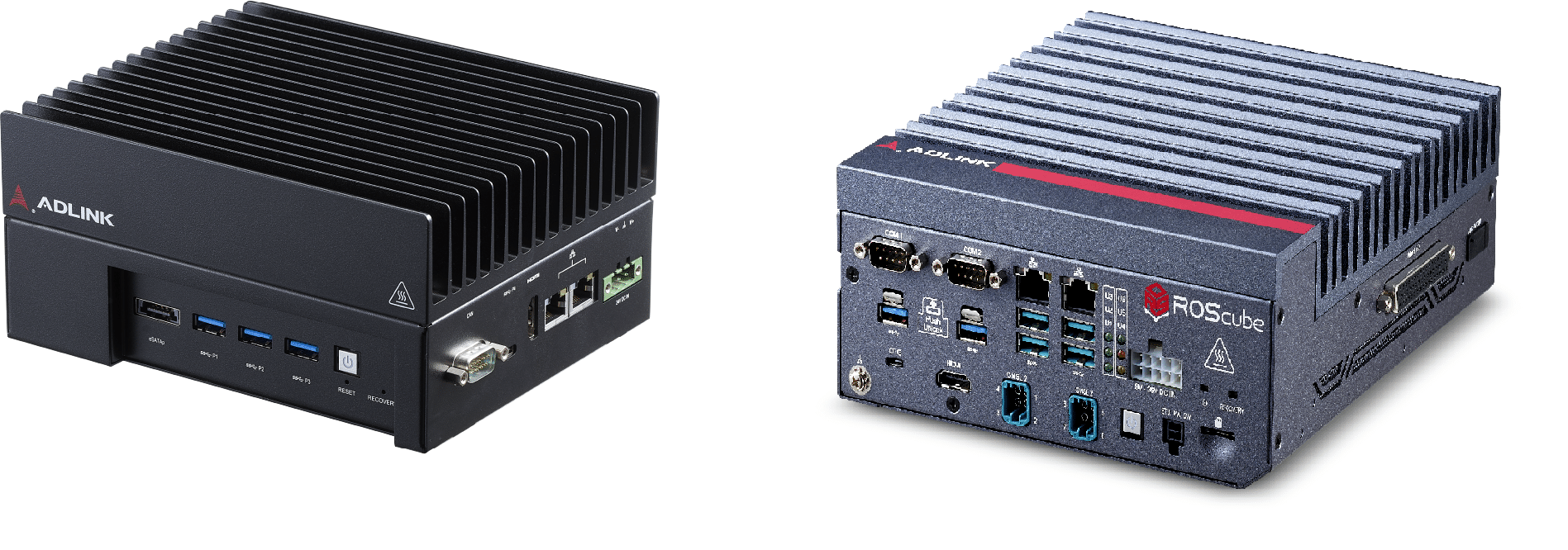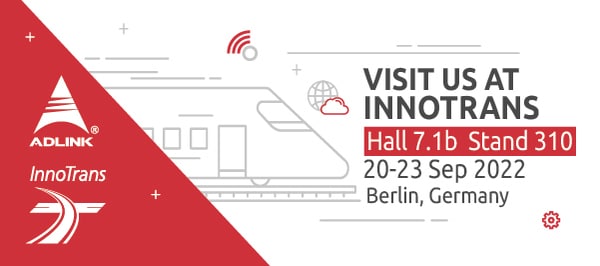By Eric Yu, xxxxxx, ADLINK
Service robots are gaining prominence as companies search for inventive ways to improve operational efficiency, ensure accuracy, increase speed and raise safety levels. According to the International Federation of Robotics (IFR), the six main application areas are transport and logistics, maintenance and inspection, healthcare, hospitality, professional cleaning and agriculture. In recent times, labor shortages and the aftermath of the pandemic have significantly contributed to accelerating their deployment. Technological advances and the dramatic increase in computational performance of artificial intelligence (AI) are enhancing existing applications, one of which is the growth of autonomous systems.
Developing autonomous systems is one of our most complex AI challenges. These are complicated systems that require various levels of specialized processing or dedicated processing capabilities to meet the performance and power requirements of each application. The NVIDIA Jetson AGX platform provides developers with a series of processing blocks, combined with great software flexibility, that have been specifically designed to fit their needs.
As an NVIDIA Preferred Partner, ADLINK has developed its DLAP AI inference platform suite and ROSCube-X robotic controller based on NVIDIA's Jetson AGX Xavier technology, capable of processing up to 32 trillion operations per second (TOPS). Both platforms have been widely deployed in various industries around the world, making it easy for autonomous system integrators to design and develop.

Figure 1: Introducing ADLINK's DLAP-411 edge AI platform for deep learning acceleration and ROSCube-X RQX-590 embedded robotic controller
Today, we are witnessing a new era of autonomous systems that require ever-increasing magnitudes of AI computational performance to meet the growing needs for multi-sensor perception, mapping and location, trajectory planning and control, environmental awareness, and advanced security with redundancy functions. The newest member of NVIDIA's Jetson AGX family, the Jetson AGX Orin module represents a giant leap forward in AI computational performance for autonomous system applications, delivering up to 275 TOPS and boasting a power budget of 15 W to 60 W. This provides system integrators with up to eight times the performance of the previous generation Jetson AGX Xavier module, but with the same compaction ratio.
The module solves the needs of complex AI systems at the edge and is compatible with the NVIDIA JetPack SDK and application-specific software platforms, including the Isaac robotics platform. ADLINK has integrated this latest module into its DLAP-411-Orin edge AI platform and RQX-590 series ROSCube-X embedded robotic controller. Let's see how they can be implemented in future generation applications.
AI-based autonomous robots to improve production processes
An example of this is the use of autonomous systems in the automotive industry in order to improve logistics and production processes. In order for customers to better determine what they want and can expect from their new purchase, automakers are beginning to offer a wide variety of options for each model. This myriad of variables in production manifests itself in the form of enormous logistical challenges.
While AGVs are successful in transporting parts to the assembly line, they lack the robotic arms, intelligence and flexibility to load and unload on their own. Relying on predetermined pathways or routes to get from one place to another, AGVs do not have the ability to plan and navigate them effectively and often require supervision by an operator.
On the other hand, autonomous mobile robots (AMR) use an advanced combination of sensors and cameras, wireless communication, and AI computational power with machine learning (ML). AI algorithms enable simultaneous localization and mapping (SLAM), navigation and guidance, collision avoidance, and object position estimation. Unlike AGVs, AMRs can move both independently and collectively through their environment and complete tasks without human intervention. Ultimately, AMRs offer automakers greater flexibility and more agile automation compared to their predecessors.
To perform these complex, data-heavy AI calculations reliably and quickly requires a rugged edge AI computing platform, capable of withstanding the harsh conditions of an assembly line, such as strong vibrations. or physical impacts. ADLINK's DLAP-411-Orin Edge AI platform executes these AI computations at high speeds, taking processing information from various sensors, including lidars and data-rich cameras. The platform also takes into account the size, weight and power (SWaP) limitations of AMRs, such as the need to work on a single battery charge for at least one full shift.
Cloud-based fleet software manages AMRs, assigning tasks based on availability and location, increasing efficiency and productivity, as well as their ability to work together with each other and with humans. Factory operators no longer need to perform repetitive loading tasks or monitor AGVs, allowing them to focus on their core activities.
AI for autonomous driving
Autonomous driving is gaining attention as one of the solutions to reduce the risk of traffic accidents caused by human errors. As the car of the future moves towards fully autonomous driving, the use of sensor technologies for more precise SLAM, as well as navigation and guidance, collision avoidance and object position estimation will increase exponentially. in real time, which is another of the vision-intensive applications of AI.

Figure 2: Autonomous driving is now a reality thanks to ADLINK's RQX-590 ROSCube-X embedded robotic controller, supporting up to eight perfectly synchronized GMSL 2 cameras and lidar data
ADLINK's next-generation ROSCube-X Series RQX-590 embedded robotic controller addresses these AI computing needs with performance of up to 200 TOPS. With a power consumption of just 40W, the controller provides excellent performance per watt. In addition, its rugged controller features an I/O extension for 5G wireless cloud connectivity for Vehicle-to-Everything (V2X) services, enabling a growing variety of safety and operational features.
The controller offers a comprehensive solution with built-in GMSL deserializers for up to eight perfectly timed automotive GMSL 2 camera inputs and a pre-installed Board Compatibility Package (BSP) with drivers for selected cameras. It also supports external PPS/GPS signals to the camera data via other sensors, such as lidar, present in other systems. Combining data from multiple cameras and lidars with V2X services enables the autonomous vehicle to safely navigate densely populated urban areas.
Conclusion
Orin's products are able to overcome AI deployment challenges, enhancing AI insight and accelerating customers' deployment of autonomous vehicles and smart manufacturing projects. ADLINK's next-generation DLAP-411-Orin edge AI platform and RQX-590 series embedded robotic controller, powered by NVIDIA's Jetson AGX Orin module, facilitate development and testing of robotics and AI with lots of data. For more information, visit ADLINK's NVIDIA Jetson DLAP AI Inference Platform.








